

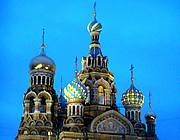
A beautiful city crossed by canals and the Neva river with so much to see. The Hermitage, of course, but the Church of Our Saviour on the Spilled Blood is an absolute stunner and not to be missed.

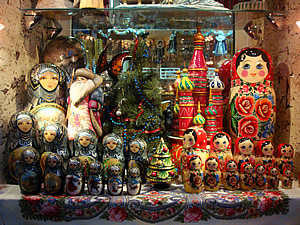
WInter in St Petersburg and it was very cold. The city was strung with lights for Christmas, though there was no sign of Christmas markets except for a small one which opened the day we left. It was really weird to be setting out for a day in the dark, sunrise was around 11 am and the sun never got very high in the sky, setting around 5 pm.
We were staying in the Corinthia Nevsky Palace Hotel on Nevsky Prospekt. It was beautifully decorated for Christmas. The food there was good - the breakfast buffet one of the most extensive I've seen - but the restaurant was closed on both Sunday and Monday evenings.
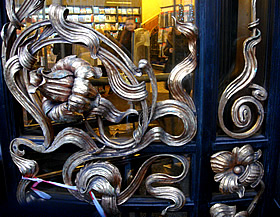
Nevsky Prospekt is the well-known main street of the city, running from the Admiralty in the west to Moscow Train Station in the east, then turns south east to the Alexander Nevsky Monastery, a distance of over 4km.
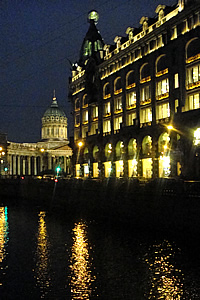
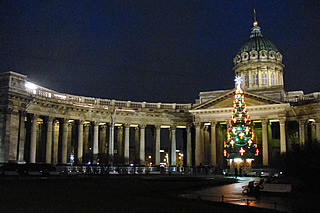
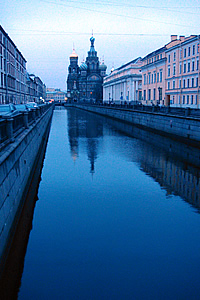
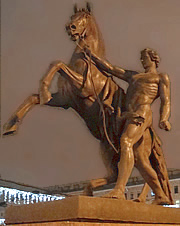
The large neo-classical Cathedral of Our Lady of Kazan stands on the south side towards the Admiralty, opposite the Singer Building which is on the corner with the Griboyedov Canal which leads up to the magnificent Church of our Saviour on the Spilled Blood.
The Singer Building is a fine example of Art Nouveau and is now home to Dom Knigi - the biggest bookshop in St Petersburg.1
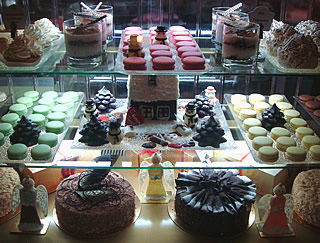
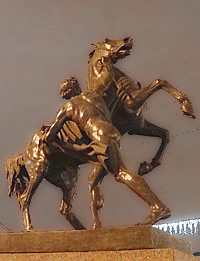
Further east the Anichkov Bridge crosses the Fontanka River. At each corner is a wonderful statue, called The Horse Tamers, created by P.K. Klodt.2
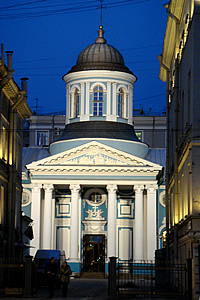
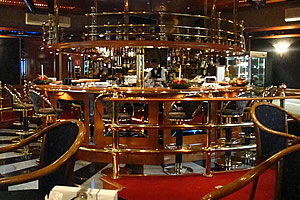
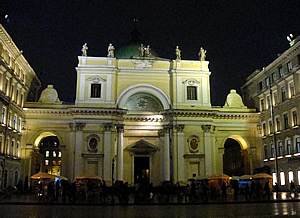
St. Petersburg was founded in 1703 by Peter the Great and many impressive buildings date from the eighteenth century. Peter was attempting to gain sea access via the Neva River to the Baltic, which entailed war against Sweden. He built the Peter and Paul fortress on an island in the Neva and it was from this small beginning that St Petersburg developed.5
We had an excellent lunch at the Griboedov Gastronomic Bar on Nevsky Prospekt. It specalises in Georgian food and the lamb and pork shashlik were excellent.
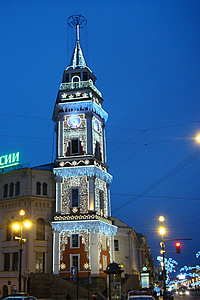
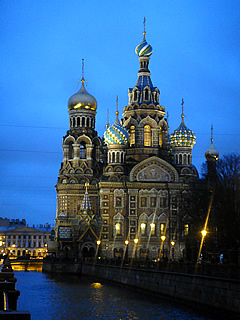
This is the common name for the Holy Resurrection Cathedral built 1883-1907 on the site where Emperor Alexander II was mortally wounded.6 This beautiful nine-domed building stands on the Griboyedov Canal north of Nevsky Prospekt and is one of the jewels of the city.
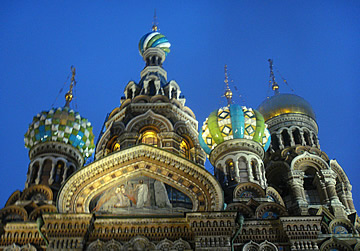
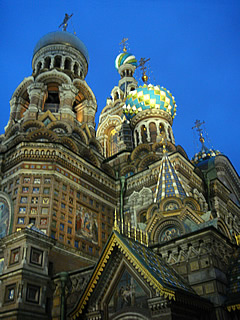
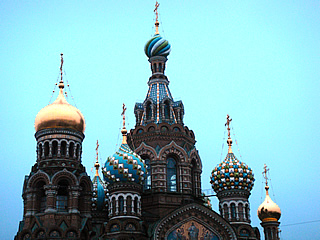
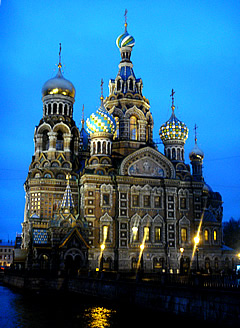
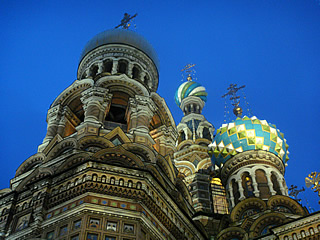
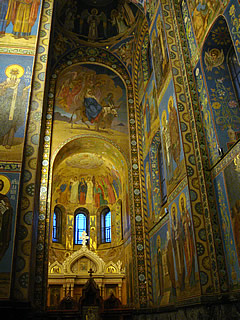
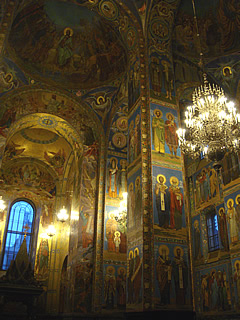
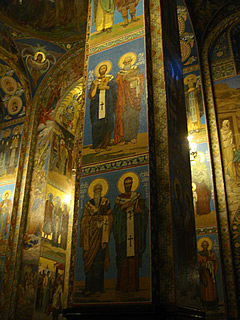
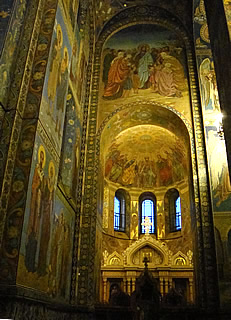
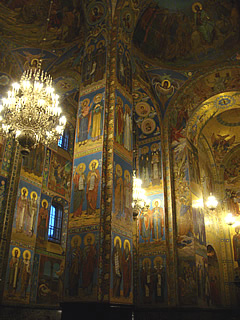
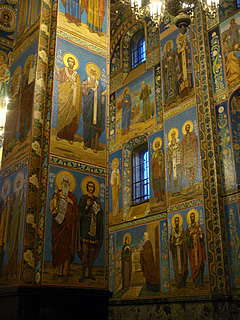
We were unprepared for the stunning interior, completely covered with brilliant mosaics.
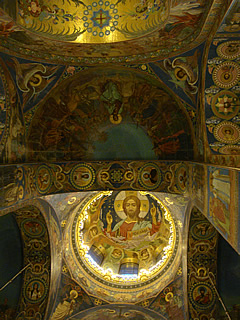
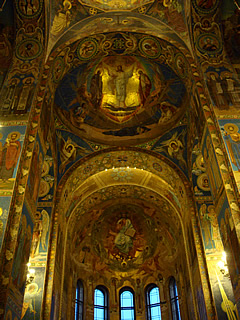
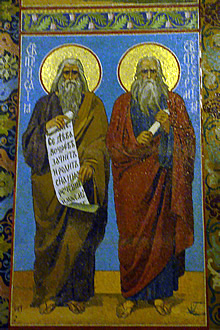
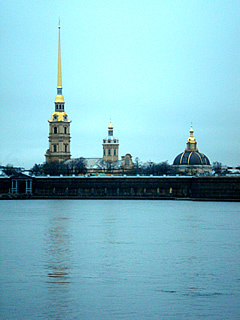
We crossed the Neva River to the fortress where Peter the Great founded St Petersburg on Zayachy (Hare) Island in 1703. To begin with it had only earth and wood defences but between 1706 and 1740 these were replaced with more substantial brick constructions and later the southern walls were faced with granite.
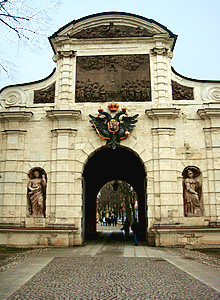
Though a garrison was stationed here in the 18th century, parts of it were also rented to merchants to store goods and the fortress never actually saw any action. From 1718 to 1921 it was used as a political prison.
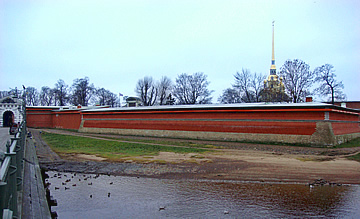
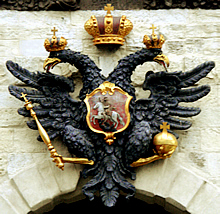
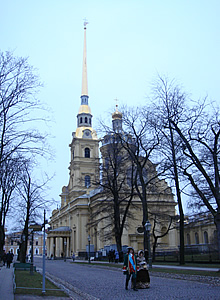
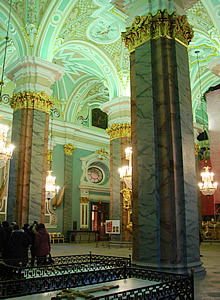
The entrance through St John's Gate leads to Peter's Gate which bears the Imperial Coat of Arms: a crowned double-headed eagle bearing a shield showing St. George killing the dragon.
We spent a couple of hours wandering around the buildings which now share the island. The noonday gun was fired while we were there - it was extremely loud!
The Peter and Paul Cathedral was built between 1712 and 1733 and within its walls, from 1708, members of the Imperial Romanov family were laid to rest including Peter the Great (1672-1725) and Catherine the Great (1729-1796). Most of the tombs are free-standing caskets within the body of the cathedral. The remains of Emperor Nicholas II and his family: Empress Alexandra Fyodorovna, Grand Duchesses Tatiana, Olga and Anastasia, however, were interred in the small Chapel of St. Catherine in 1998, eighty years after they were all executed in Yekaterinburg in 1918.
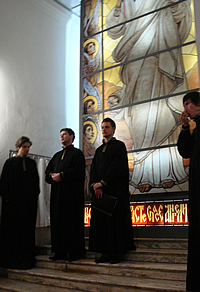
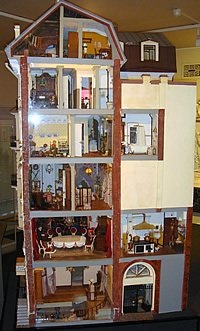
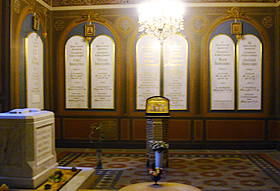
Just as we were about to leave the cathedral a monk ushered us, along with others, into a side room illuminated by a tall stained glass window of Christ. Five monks then sang a short piece, I don't know what it was, but it was very affecting.
Near the cathedral is the 18th century boat house used for the boat in which Peter the Great learned to sail as a young man.
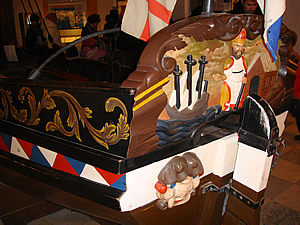
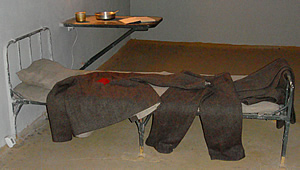
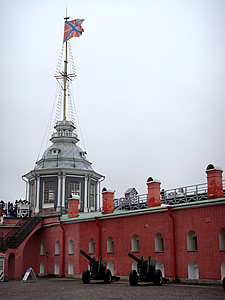
We went into the Commandant's House to see the permanent display on "The History of St. Petersburg - Petrograd, 1703-1918" which includes many everyday domestic items to show what life was like for ordinary people.
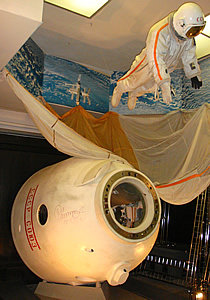
The Trubetskoy Bastion Prison was the main remand prison in the country until 1918. The cells were extremely spartan, little more than an iron bed with thin mattress and a table fixed to the wall. The prison clothes looked extremely heavy and itchy. It is probably more interesting if you are more familiar with the stories of people who were imprisoned here; these included Lenin's brother and Maxim Gorky. There is a lot of information about the prisoners, including many political prisoners - signs of the coming revolutions in the early 20th century.
Our final stop was at the Space Museum, probably of most interest to me, but where, unfortunately, all the information was in Russian.
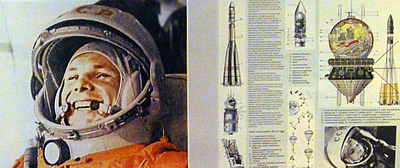
The museum charts the history of the engines and rockets with models. At the end is a real Soyuz capsule looking extremely cramped for two people.
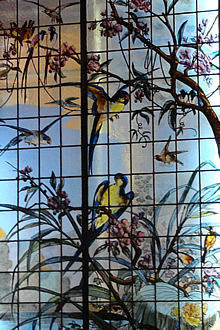
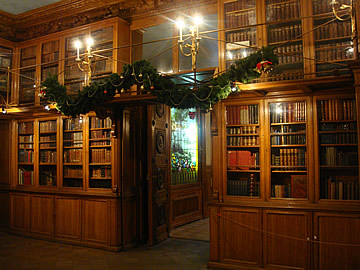
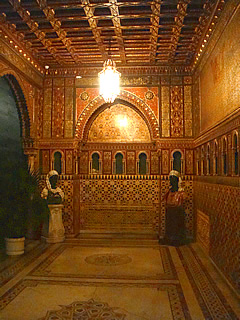
Yusupov Palace is famous as the place where Rasputin was murdered! We purchased a photo permit for 150Rb, donned overshoes to protect the floors, and set off with our audio guides.
This isn't as grand nor as extensive as the Winter Palace or fabulous Catherine Palace in Tsarskoye Selo, but it belonged to an immensely rich noble family who stuffed it with artworks and treasures.
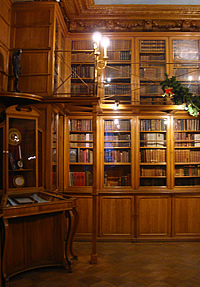
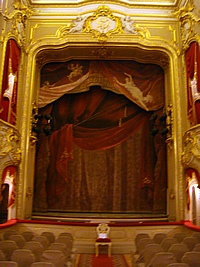
Much of the decoration is very fussy in a baroque style but it has an impressive little theatre, a nice book-lined study, and a beautiful Moorish room, which unfortunately was half closed for renovations, which they anticipate will take three years.
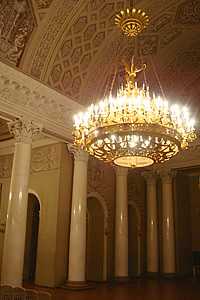
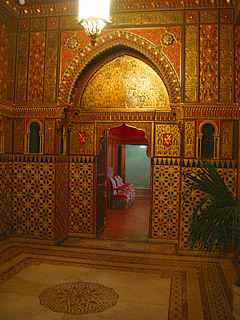
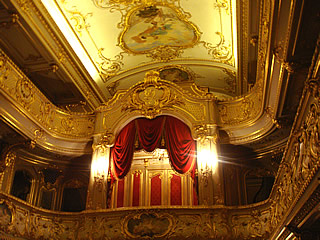
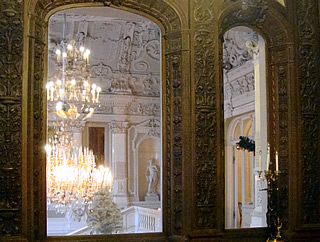
Rasputin was poisoned, shot and beaten in the basement here before being dumped in the river across the road. To see where this happened you have to take a separate tour but wax figure recreations don't really appeal!
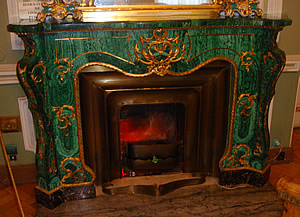
A 19th century building completed on the site of numerous previous attempts to build a cathedral.7 It is in the form of a Greek cross i.e. on a square base rather than rectangular, with a tall central dome encircled by a colonnaded balcony.
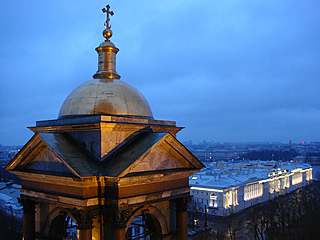
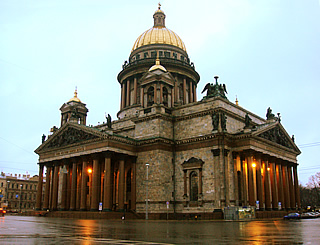
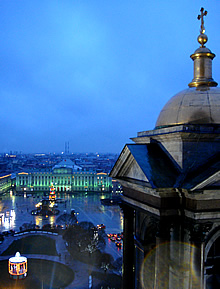
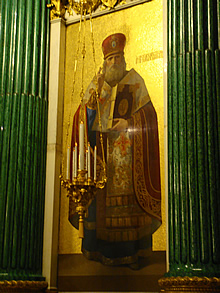
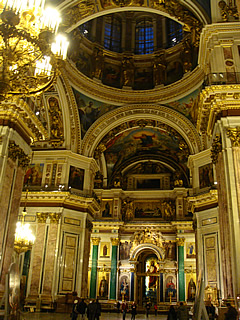
We visited late afternoon and it was really the wrong time, too gloomy to see much from the colonnade on the outside of the dome! We will definitely have to come back in summer - hopefully during "white nights" when darkness never falls! Still, the illuminated 19th century Mariinsky Palace, built by Tsar Nicholas I for his daughter,8 and Senate and Synod building were pretty impressive.
It was far too cold to linger on the colonnade so we descended to take a look inside.
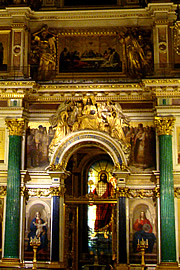
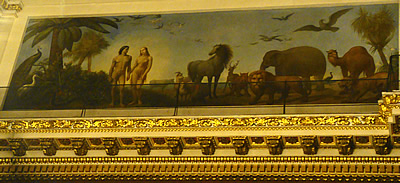
The interior is richly decorated with mosaics, lots of gilding and marble-faced neoclassical architecture.
The blue and green columns are rather nice but ultimately, for us, neither the exterior nor interior cannot compare to the Church on the Spilled Blood.
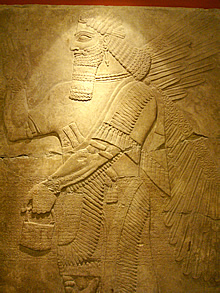
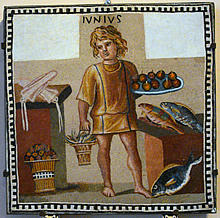
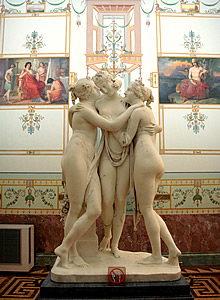
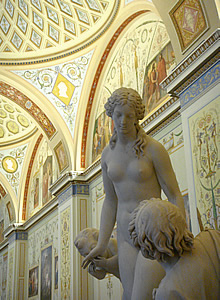
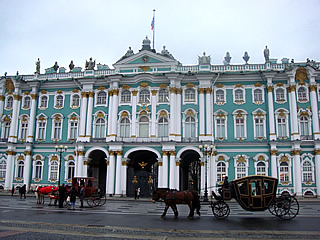
We assigned a day to the Hermitage, one of the world's great museums. Much of the information is in Russian, though at least most of the exhibits also have an English translation of the title, age and origin.
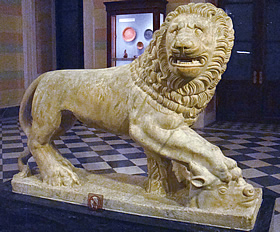
We headed first for the Assyrian galleries - a favourite topic for me - but I would have to say that they are not as impressive as the British Museum's. There were one or two nice reliefs but no colossal winged human-headed lion or bull, massive gates or long carved friezes of battles and hunts.
On to the rather larger Egyptian Gallery which has some nice things but, again, the British Museum, with more extensive, varied and impressive exhibits, and the wonderfully decorated sarcophagi in the Kunsthistoriches Museum in Vienna, are better.
However, from here on in we found some lovely things. Unfortunately others we wanted to see were unavailable: the Caravaggio Lute Player must have been on loan, and we couldn't get to see the Scythian Gold because the gold room was closed and the attendants couldn't say when it would be open again - this is one for next time.
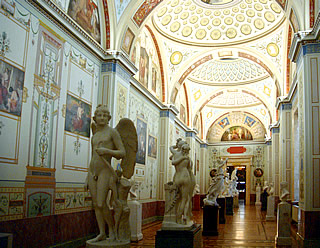
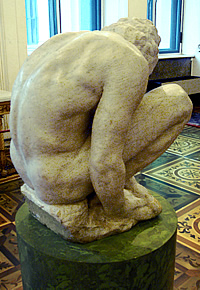
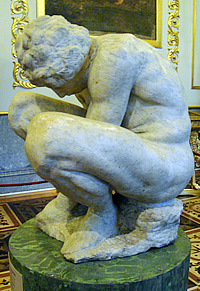
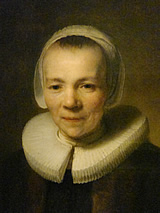
The Michelangelo Crouching Boy10 is beautiful, though unfinished, and the Rembrandt room is fantastic - especially the portrait of Baertje Martens.
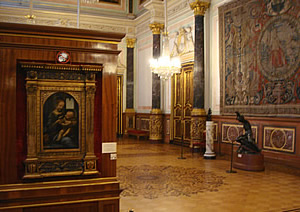
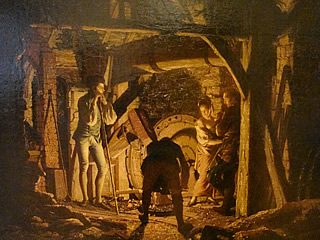
There were two Joseph Wright of Derby paintings; I particularly liked the glowing An Iron Forge viewed from Without12 but intrigued to know what is going on as a rather scantily clad young woman and a gentleman observe a blacksmith at work at night. This was purchased by Catherine the Great in 1774, only a year after it was painted; she was obviously a woman of very good taste and judgement!
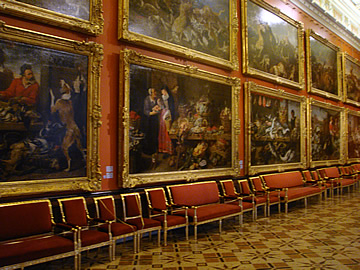
This was also, of course, the Winter Palace of the tsars and some of the rooms, such as the European sculpture gallery and Raphael Loggias, are very beautifully decorated.
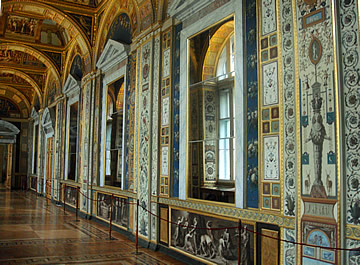
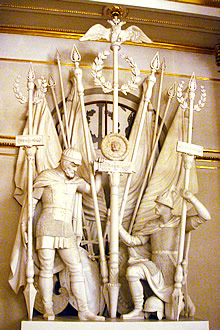
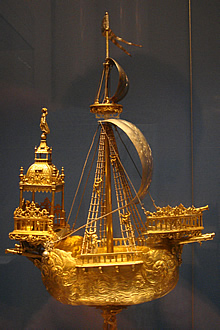
Others, like the Armorial Hall, with its gilded fluted columns, and the white and gold Grand Staircase, are just stunning in their scale and opulence.
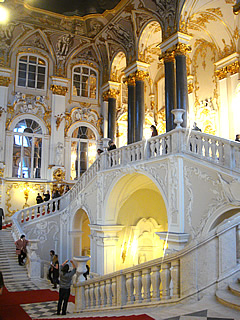
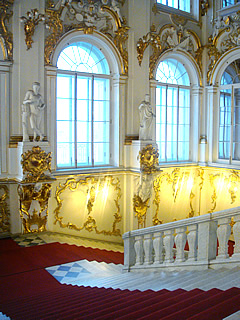
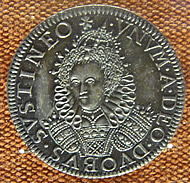
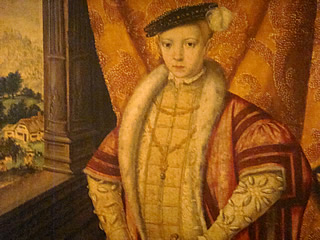
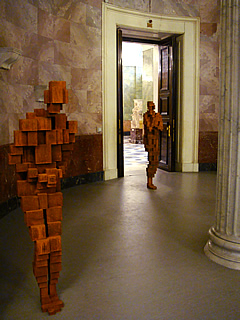
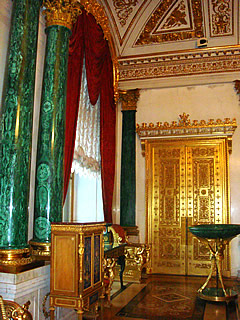
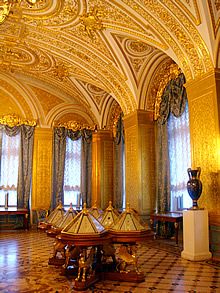
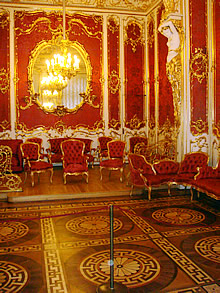
The Gold Drawing Room is another dazzling space with a white ceiling generously picked out in gold and gold walls.
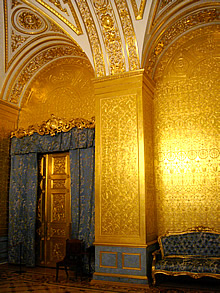
Then there's the Malachite Room, with a similar white and gold ceiling and fabulous green malachite columns.
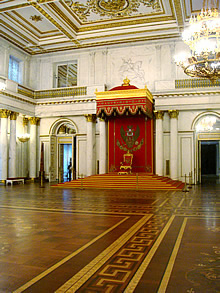
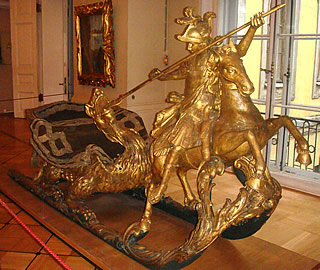
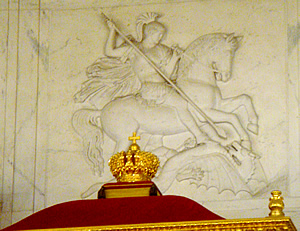
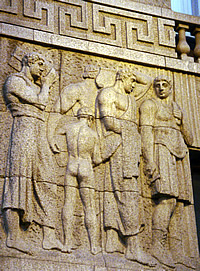
As the patron saint of the Romanovs there are many representations of Saint George and the Dragon.
We'd had a meagre lunch in the museum café but there wasn't much to choose from so when we finally left we were starving.
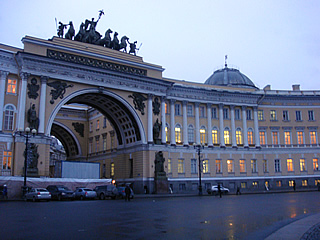
Out in Palace Square we went through the Triumphal Arch opposite the Hermitage and stumbled upon a brilliant bar, the Baltika Brew, in an Art Deco building.
A vast place it has a small stage in one corner, comfortable sofas, good service and great beer. With its own brewery we were onto a winner: Monastic for me and Palace for Andrew and a dish of chicken wings hit the spot! Later in the holiday we went back and had equally excellent Cabinet and chocolate stout!